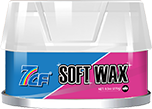The core function of rust lubricant is to form a low-friction lubricating film on the friction surfaces of mechanical components. Its working principle is based on fluid dynamics and boundary lubrication theory. When the rust lubricant is sprayed onto the component surface, the base oil and additives rapidly spread and adhere. The base oil primarily reduces friction by creating a continuous oil film that separates the originally direct contact between solid surfaces. This transforms metal-to-metal or metal-to-other-material dry friction into liquid friction between oil films, significantly lowering the friction coefficient and reducing wear. Meanwhile, additives serve specific roles: anti-wear additives chemically react with the metal surface under high loads to form a tough protective layer that enhances wear resistance; rust inhibitors create a dense protective barrier on the metal surface, blocking oxygen and moisture to prevent rust and corrosion.
Lubrication
Reduces friction and wear between metal-to-metal contacts as well as between metal and other materials such as plastic or rubber.
Rust Prevention
Certain components in the rust lubricant form a protective film on metal surfaces that isolates air and moisture, preventing rust and corrosion.
Cleaning
Rust lubricant can wash away dust, oil, and other contaminants from the component surface, creating optimal conditions for subsequent lubrication.
Clean the lubrication area and ensure it is dry.
Shake the container thoroughly before use.
Spray the lubricant evenly onto the lubrication points.
Wipe off any excess liquid with a soft cloth.
For precision application, use a spray nozzle or tube if available.
7CF Rust Lubricant has excellent cleaning properties that remove dirt and contaminants, ensuring optimal lubrication conditions. Easy to apply and suitable for a wide range of industrial, automotive, and household uses, it is an essential product for maintaining equipment reliability and performance.
Contact Us
 English
English  Español
Español  日本語
日本語  한국어
한국어  français
français  Deutsch
Deutsch  italiano
italiano  русский
русский  português
português  العربية
العربية  tiếng việt
tiếng việt 


